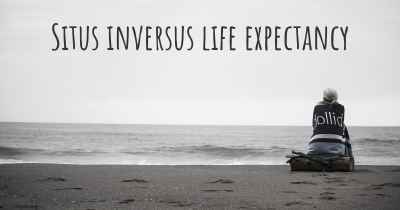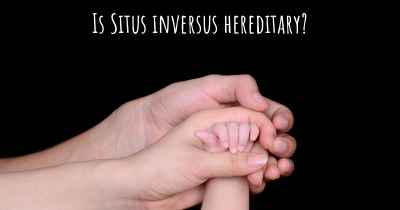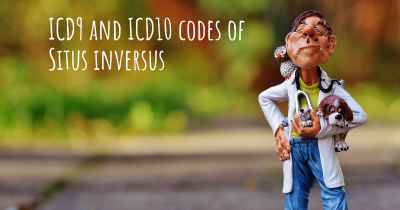What is the history of Situs inversus?
When was Situs inversus discovered? What is the story of this discovery? Was it coincidence or not?

Situs inversus is a rare medical condition characterized by the reversal or mirror-image positioning of the internal organs. Instead of the usual arrangement where the heart is on the left side and the liver is on the right, individuals with situs inversus have their organs flipped, with the heart on the right and the liver on the left. This condition affects approximately 1 in 10,000 people.
The history of situs inversus dates back to ancient times, although it was not fully understood until modern medicine advanced. The first recorded case of situs inversus was found in an Egyptian mummy dating back to 3000 BC. However, it wasn't until the 17th century that the condition was recognized and described in medical literature.
Marco Aurelio Severino, an Italian anatomist, was one of the first to document situs inversus in the 1640s. He described a case where a woman's heart was located on the right side of her chest. Severino's observations laid the foundation for further research into this peculiar condition.
In the 18th century, Matthew Baillie, a Scottish physician, provided further insights into situs inversus. He described a case where a man with situs inversus lived a healthy life, proving that the condition did not necessarily lead to health complications.
Advancements in medical imaging techniques in the 20th century allowed for a better understanding of situs inversus. Dr. Kartagener, a Swiss physician, discovered a link between situs inversus and a condition called primary ciliary dyskinesia (PCD). PCD is a genetic disorder that affects the functioning of cilia, tiny hair-like structures that line the respiratory tract and other organs. This discovery led to the recognition that situs inversus could be associated with other underlying health issues.
With the advent of genetic research, scientists began to unravel the genetic basis of situs inversus. In the 1990s, researchers identified mutations in specific genes, such as PKD1 and PKD2, which are associated with situs inversus in individuals with a condition called autosomal dominant polycystic kidney disease (ADPKD).
Today, situs inversus is understood to be a result of a complex interplay of genetic and environmental factors. It can occur sporadically or be inherited in an autosomal recessive or autosomal dominant manner. Genetic testing and prenatal screening have become valuable tools in diagnosing situs inversus and associated conditions.
While situs inversus itself does not typically cause health problems, it can complicate medical procedures and diagnoses. For example, during surgery, medical professionals must be aware of the reversed organ positions to avoid potential errors. Additionally, situs inversus can be associated with other congenital abnormalities, such as heart defects, which may require specialized care.
In conclusion, the history of situs inversus spans centuries, from its first recorded instance in ancient Egypt to the modern understanding of its genetic basis. The contributions of anatomists, physicians, and researchers have gradually unveiled the mysteries surrounding this rare condition. Today, medical advancements continue to improve the diagnosis and management of situs inversus, ensuring individuals with this condition receive appropriate care.








